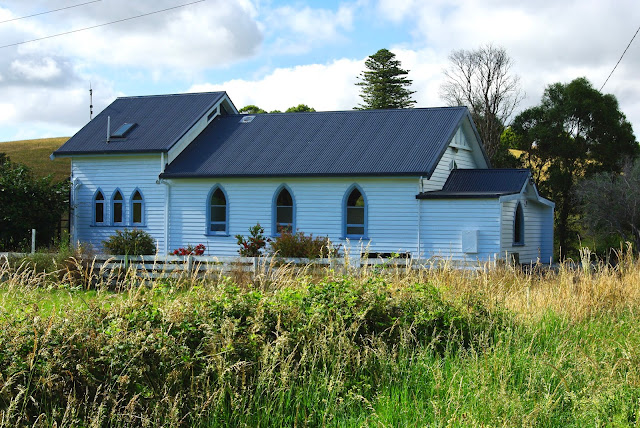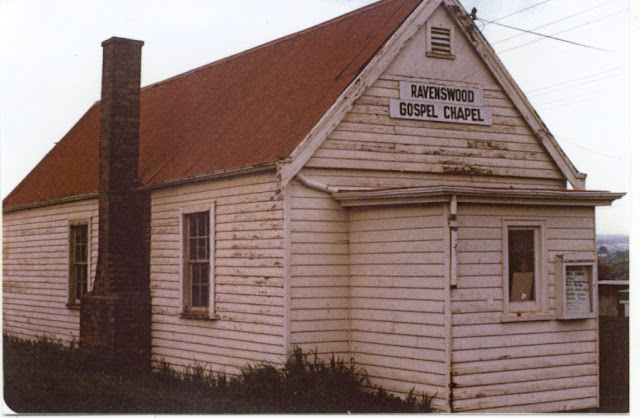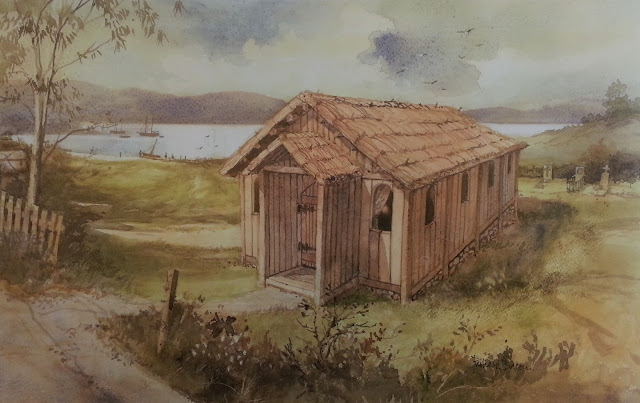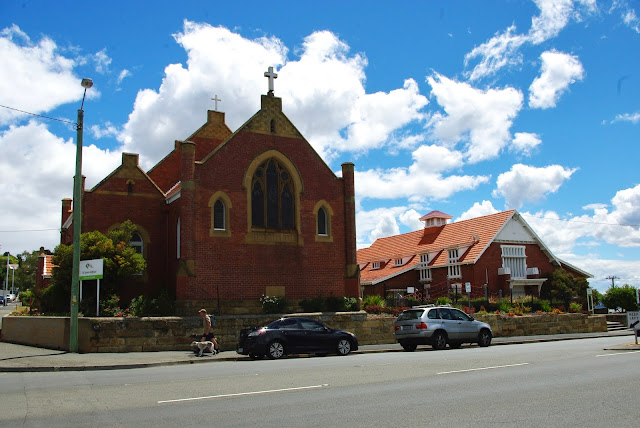No. 883 - Rocky Cape - St Andrew's Presbyterian Church

Rocky Cape is a rural settlement on the Bass Highway located about 30 kilometres north-west of Wynyard. The name Rocky Cape is taken from a prominent coastal feature described by Matthew Flinders in 1798. Monthly Presbyterian services at Rocky Cape were held from 1896. Services were initially held at the Rocky Cape State school and then in the public hall after this opened in 1907. The construction of a Presbyterian church was first proposed in 1921 with Mr John Bauchop donating land for the building. A fundraising committee formed and in 1922 the land was cleared by a working-bee in preparation for building work. For reasons which are not clear the construction of a church on John Bauchop’s land did not proceed and little progress was made until the mid 1930s. In 1935 a quarter acre of land was purchased from Mr. A.F. Brakey, “facing Bauchop’s road, directly opposite the Church of England”. Construction commenced in 1935 with the church designed and built by H. Jones & sons of Wyn...









